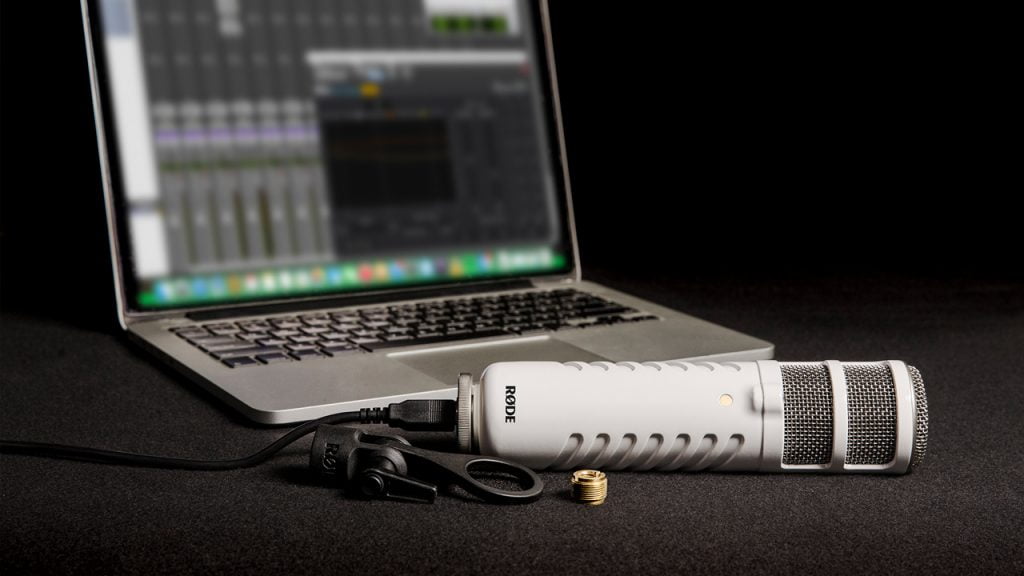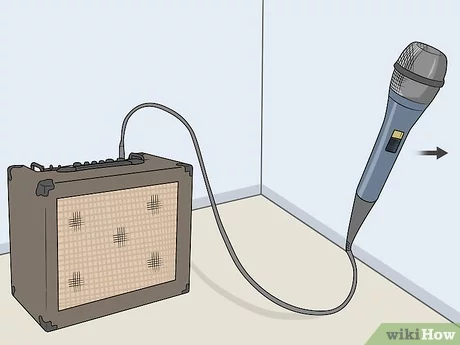There are a few different ways for how to connect mic to speaker. The method that you choose will depend on the type of microphone and speaker you are using and the type of audio input and output ports that they have.
In general, there are some basic methods that you can use: wired connections, wireless connections, and an audio interface.
In this blog post, I will discuss how to connect mic to speaker using an audio interface, wired and wireless connections, etc.
Essential Methods To Connect Mic To Speaker:


Wired Connections
Typically, people use an XLR to TRS (or 1/4″) cable for wired connections. The advantage of this method is that there is no lag between when the audio signal is sent and when it is heard, making it the most reliable connection. The downside is that you need to have a cable long enough to reach the microphone to the speaker.
Wireless Connections

There are two common types of systems for wireless connections: transmitter and receiver. The transmitter sends the audio signal wirelessly to the receiver, then outputs it to the speaker. The advantage of this type of system is that you can place the transmitter and receiver anywhere within range of each other. However, the downside is that there can be a delay between when the audio signal is sent and when it is heard, making it less reliable than a wired connection.
An Audio Interface

The third way to connect a mic to a speaker is by using an audio interface. An audio interface is a device that converts the analog audio signal from a microphone into a digital signal that a computer can read. This allows you to use a microphone with a computer, which can then output the audio signal to a speaker. The advantage of this method is that it is reliable, and there is a slight lag between when the audio signal is sent and when it is heard. The downside is that you need an audio interface (you can either buy one or if you use a laptop like me, you can buy a USB microphone) and cables to connect everything.
How To Connect Mic To Speaker?
- Plug one end of the XLR cable into the microphone and the other end into the audio input port on the audio interface.
- Plug one end of the TRS cable into the speaker and the other end into the audio output port on the audio interface.
- Turn on both the microphone and speaker.
- Adjust the levels on the audio interface.
- Adjust your microphone levels by pressing the “select” button on the front of the microphone and speaking into it while you adjust the mic level on the front knob on your audio interface.
At this point, if everything is set up properly, you should hear yourself talking through your speakers!
Connecting A Microphone Directly To A Loudspeaker
Some powered loudspeakers include an input for a microphone, which may not require any additional equipment at all. This is an excellent option if you’re willing to invest in a couple of powered speakers.
If your speaker does not have this feature, you can purchase a mixer that will allow you to connect a mic, and the sound from the mixer’s outputs can be sent through either powered or unpowered speakers (the same can be done with a DJ mixer).
The other option for connecting the mic to the speaker is possible through an audio interface. Modern digital interfaces should all have at least two inputs, which enable you to secure more than one microphone or device, like instruments.
If your audio interface has these connections, you can connect the mic to one input and your speaker to the other. Make sure that you have set up your interface correctly not to pick up any noise or feedback from your speakers.
FAQ’s (Frequently Asked Questions)
Why would I need a mixer to connect a microphone to a speaker?
Mixers are used for a variety of purposes, but in this case, we would be using them to amplify the signal from the microphone before sending it to the speaker.
What is an audio interface, and why do I need one?
An audio interface is a device that converts the analog audio signal from a microphone into a digital signal that a computer can read. This allows you to use a microphone with a computer, which can then output the audio signal to a speaker.
What are TRS connections?
TRS stands for Tip, Ring, Sleeve, reflecting the three points on the plug where the sound comes in or out of each cable.
What is an XLR connection?
XLRs are the most common type of connector for microphones. They have an advantage over TRS connections in that they are more reliable. A disadvantage is that they are more significant and challenging to use with smaller equipment.
How do I adjust my microphone levels?
If you don’t want to invest money in a mixer, you can adjust your microphone levels by pressing the “select” button on the front of the microphone and then adjusting the mic level on the front knob on your audio interface.
How do I adjust my speaker levels?
If you don’t have a mixer, you can adjust speaker output by adjusting the volume knob on the speaker’s back.
Why do I need a direct box?
A direct box is used when you want to connect an instrument that has either an unbalanced connection or no connection at all. Most instruments will not have balanced connections, so you’ll use a direct box with an XLR cable to get the best sound.
Conclusion
Remember, when you connect your speakers and your mic, make sure that the levels are set appropriately, or you could end up with some very loud feedback! And, if you’re not using a mixer, make sure that you adjust the volume on your speaker to get the best sound possible.
I hope you enjoyed this article and feel more equipped to decide how to connect a microphone directly to a speaker.
Until then check out some of my other articles too:
How To Use Headphone Mic On Pc?
How to use a USB microphone on Xbox One?
How To Hold a Microphone In Detail
How To Use Bluetooth Karaoke Microphone?
How to Make Blue Snowball Sound Better?
